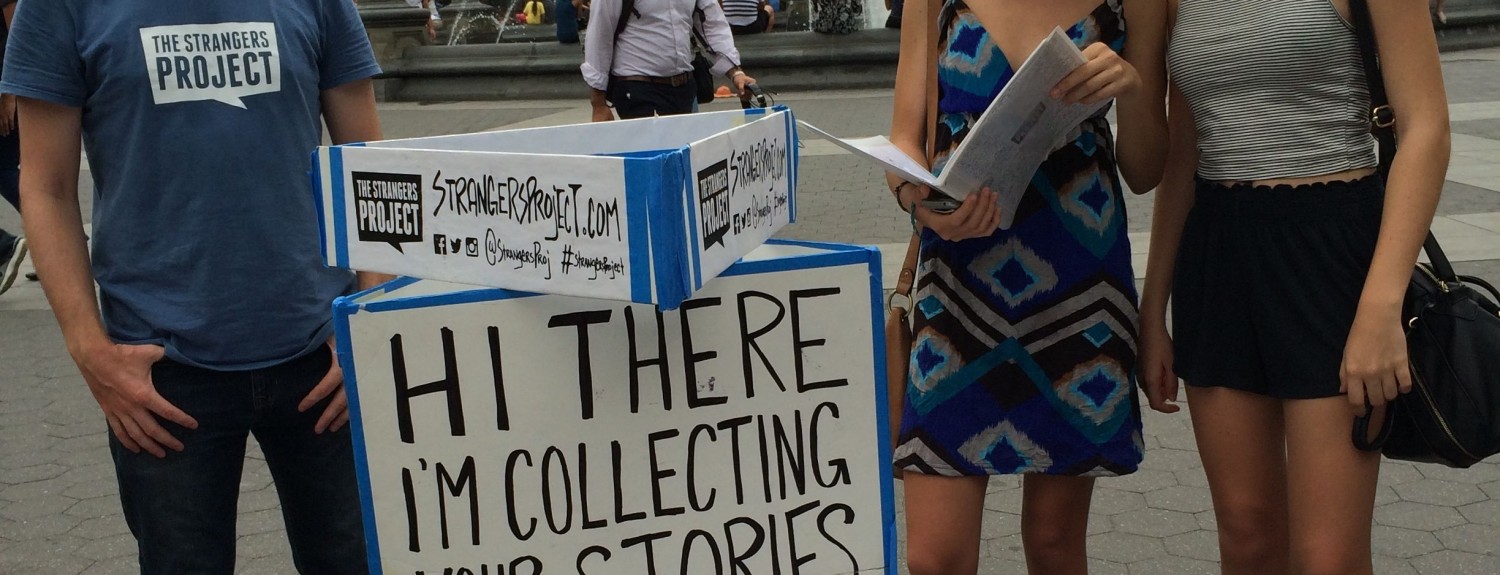Lifestyle & Culture
Sharing Experiences Through “Strangers Project” Stories
“Everyone has a story.”
That is the premise of the Strangers Project, which has collected a trove of handwritten stories from people enticed by Brandon Doman’s three-dimensional cardboard sign. It reads “Hi there, I’m collecting your stories.”
In locations including Manhattan’s Washington Square Park, Doman, 28, displays his sign to attract what he estimates are 60 to 120 people a day. They jot down details of a chosen aspect of their lives on a single sheet of paper.
“It’s a participatory art project,” said Doman, a tech developer from Brooklyn. “People enjoy being a part of something other people are doing … I usually tell people to just embrace whatever [they’re writing] on the page.”
The goal is to be honest, not scripted, Doman said.
Another goal of his project is to help people connect to each others’ experiences.
Brittany Zhang, 17, is a Connecticut resident who recently added her contribution to Doman’s collection. “Even if you haven’t shared the exact same experiences, you can connect with [others] on an emotional level,” she said. “So, you know if [the writer is] disappointed or sad. There’s bound to be an emotion that you’ve definitely felt.”
New York University School of Medicine student Bianca Marlin, 27, another contributor to the project, said reading an unfamiliar story can show a person how much strangers may hold in common. “The beauty of this is the anonymity of it,” she said. “I have no predisposed assumption to the person. So, it’s my natural inclination to assume this person is me.”
Doman said his project is designed to help people make those kinds of human connections.
“We’re all curious about one another. That’s the same reason people choose to read and share their stories,” said Doman, who has been a presenter for Furman University’s Tedx. That’s the Greenville, S.C. arm of the Ted Talk series on ideas, an international project.
Doman launched the Strangers Project five years ago in an Ann Arbor, Mich. coffee shop after receiving a degree in creative writing from Central Michigan University.
Since that launch, Doman said, he has collected more than 10,000 handwritten stories. He published some of them in a 2011 anthology, “Hearts, Minds, and Flesh,” and exhibited those papers containing writers’ stories in “Evidence of Living,” a June 2014 show at Fountain Art Gallery in Midtown Manhattan.
This is a snippet from one person’s story:
I was an undocumented immigrant for around 15 years of my life. I very recently was able to change this because of a policy change by the Obama administration. My life has changed 10x because of this policy. I am now able live and work freely in the United States, and it feels great! It’s like coming out of the shadows.
Doman does not pay the writers.
The writings don’t have to be grammatical or logical or perfect in any way. Writers can scratch things out and scribble. Contributions also can be illustrated with drawings or other visual art.
The submissions to his project have included those that are short and long, serious and frivolous, depressing and uplifting.
People seem curious about what Doman is doing and drawn to the freedom he allows them, he said. That may be why they write for his project, he said.
“I’m always surprised. I read every single story. And, 10,000 stories later, I never know if [the next story is] going to be an amazing new story that I haven’t heard,” Doman said.
While Doman’s work mostly has taken place in New York, he also has tried to extend his reach. On August 24, 2013, which he billed as International Story Day, Doman and 800 volunteers stationed themselves in 62 different countries to collect stories, he said. He has tentative plans to make International Story Day an annual event.
With thousands of submissions to sift through, Doman said that he aims for the writings to reflect a diversity of human experiences, people and places.
“I try,” he said, “to get a glimpse into the lives of a wide range of people.”


